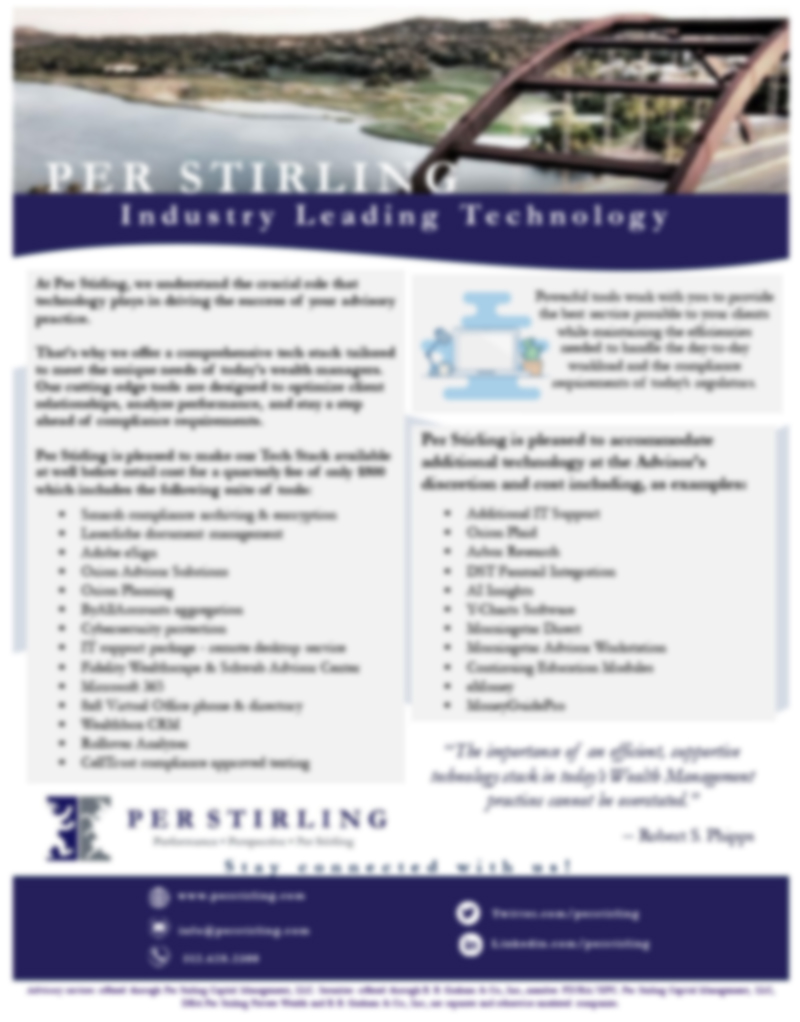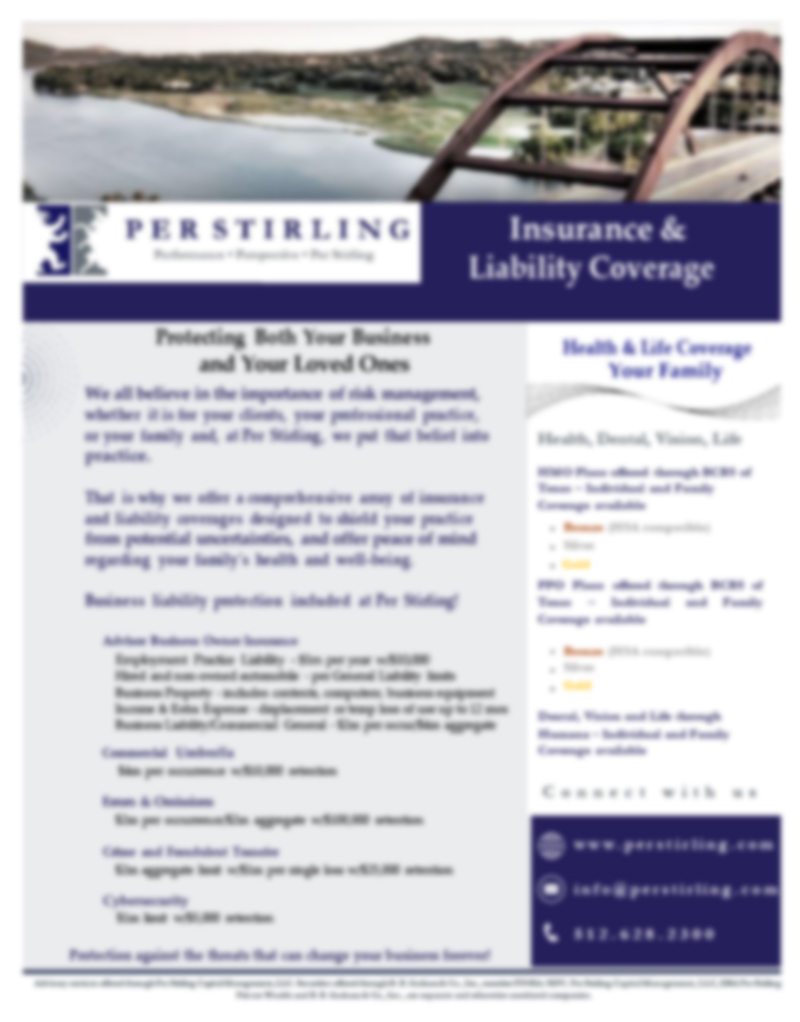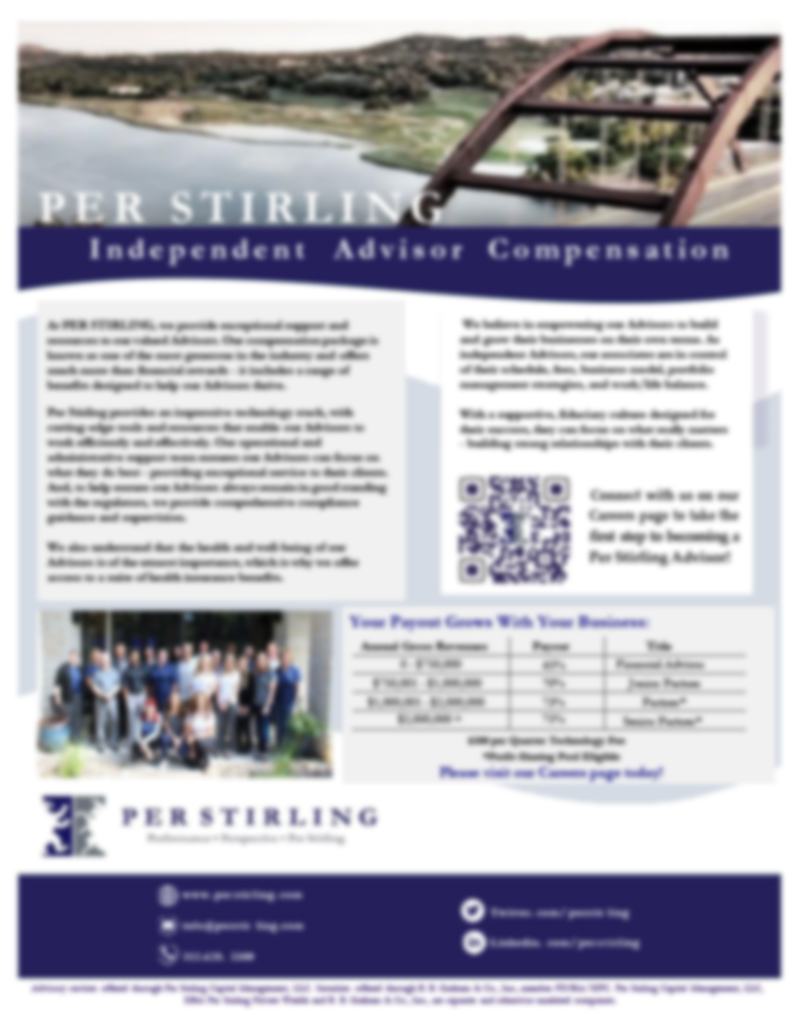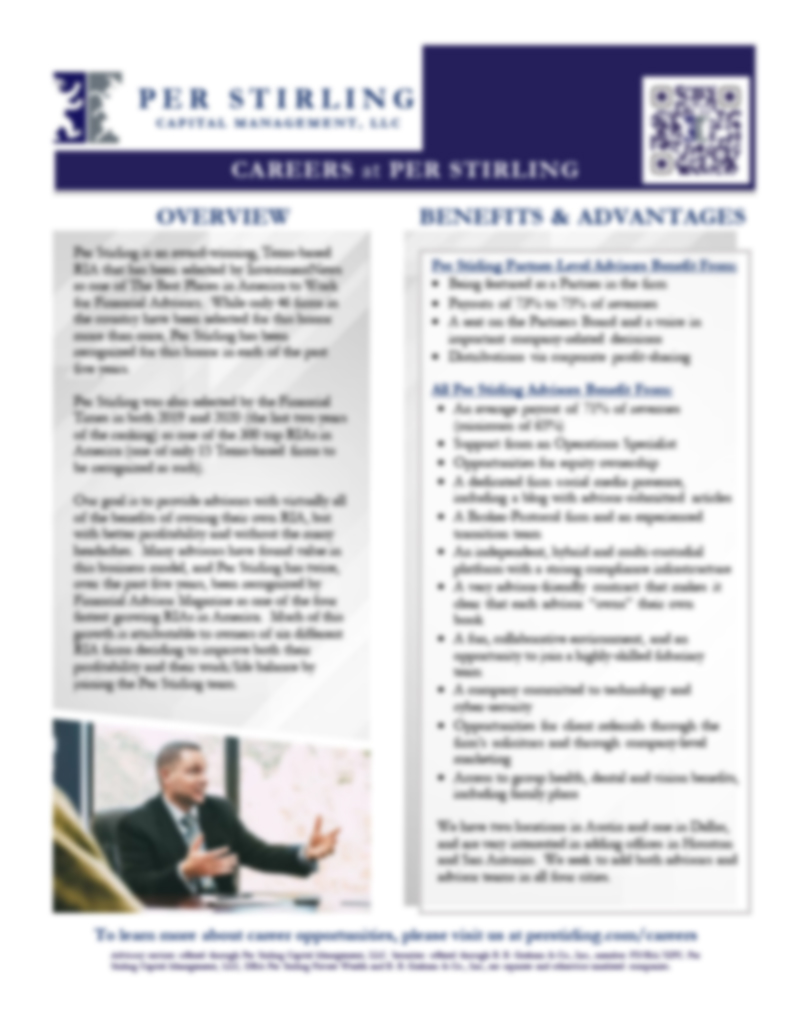11
FebruaryYour 10-Step Retirement Planning Checklist
Are You On Track to Retirement?
Retirement might feel far away when you’re busy with kids, growing your career, or paying off a home, but creating a retirement savings strategy early can make all the difference. The sooner you begin, the more time your money has to grow—and the less stressful planning may be down the road.
This 10-step checklist offers clear steps to guide your planning. Whether you’re asking, “Am I on track to retirement?” or using one of our retirement calculators, this guide will help you plan for the future while balancing today’s demands.
The Retirement Planning Checklist
This checklist can be a starting point for building a retirement plan tailored to your family’s needs. With practical strategies, it keeps you focused and confidently on track to retirement, no matter how far off it may feel.
1. Start Saving in Your 401(k)
A 401(k) is a powerful retirement savings tool. Contributions are made pre-tax, reducing your taxable income and helping you save more. Many employers offer matching contributions—free money for your retirement. For instance, if your employer matches 50% of your contributions up to 6% of your salary and you save $6,000, they’ll add $3,000.
Compound interest grows your 401(k) retirement savings by earning interest on your contributions and past earnings. The earlier you start, the more time your nest egg has to grow, helping you get on track to retirement faster.
Consider:
- Get your employer’s full match: Contribute at least enough to qualify—it’s a 100% return on that portion of your contributions.
- Increase contributions yearly: Even a 1% annual increase can make a significant difference over time.
Why It Matters:
With pre-tax contributions, employer matching, and the power of compound interest, your 401(k) can grow significantly over time. Start early to maximize your savings and help stay on track to the retirement goals you set.
Use a Retirement Calculator to see how much your savings can grow and if you’re on track to retirement.
2. Make Tax-Smart Decisions
Saving for retirement isn’t just about how much you put away—it’s about making your money work smarter. By planning ahead for taxes, you can manage what you owe and potentially grow your savings faster, keeping more of your income in your pocket over time.
Consider:
- Pre-tax vs. Roth contributions: Choose a Roth retirement plan to pay taxes now and withdraw tax-free later if you expect a higher future tax bracket. Pre-tax lowers taxable income today.
- Leverage a Healthcare Spending Account (HSA): Get triple tax benefits—tax-free contributions, growth, and withdrawals for qualified healthcare expenses.
Why It Matters:
Tax management strategies may help grow your savings faster, helping you stay on track toward retirement. Use a retirement calculator to explore the impact of your tax decisions.
3. Understand Roth and SIMPLE IRAs
Retirement savings methods aren’t one-size-fits-all. Independent Retirement Accounts, or IRAs, are another option. Roth IRAs offer tax-deferred growth and withdrawals, while SIMPLE IRAs provide a cost-effective option for the self-employed and small business owners to save for the future.
Consider:
- Open a Roth IRA: Take advantage of tax-deferred growth and withdrawals, especially if you expect to be in a higher tax bracket in retirement.
- Consider a SIMPLE IRA: If you’re self-employed or run a small business, this plan offers higher contribution limits than traditional IRAs and is simple to set up.
Why It Matters:
Having both pre-tax and post-tax retirement accounts provides flexibility when withdrawing funds, helps you manage taxes more effectively, and helps you stay on track toward the retirement goals you set.
4. Learn About the 4% Rule
The 4% rule is a popular guideline for determining how much you can withdraw from your retirement savings each year without running out of money. According to the theory, if you withdraw 4% of your savings during your first year of retirement and adjust that amount annually for inflation, your savings should last about 30 years. While not perfect, it’s a helpful starting point for planning
Consider:
- Estimate your savings goal: Multiply your desired annual retirement income by 25. For example, if you want $40,000 annually, aim to save $1 million.
- Account for variables: Adjust your plan for factors like inflation, healthcare costs, or longer life expectancy, which can affect how far your savings will stretch.
Why It Matters:
Understanding the 4% rule gives you a clear savings target and helps you build a roadmap for retirement. It turns the question “Am I on track to retirement?” into a measurable, actionable goal. Pair the 4% rule with a retirement calculator for even more clarity.
Step 5: Educate Yourself About Social Security and Medicare
Social Security and Medicare are vital to most retirement plans. Understanding how they work and how they might change can help you plan proactively and avoid over-relying on benefits that might not fully meet your needs.
Consider:
- Learn about Social Security: Read trusted resources like the SSA Basic Course and SSA Overview to understand eligibility, benefits, and potential future changes.
- Understand Medicare basics: Use resources like Medicare.gov Basics and Medicare and You to explore coverage options.
- Stay informed on program updates: Follow trusted financial news sources like The Wall Street Journal, MarketWatch, and CNBC to track changes to Social Security and Medicare.
- Evaluate reliable sources: Use tools like iGrad’s guide to trustworthy financial sources to access accurate and unbiased information.
Why It Matters:
Social Security and Medicare benefits alone may not be enough to fully fund your retirement or cover rising healthcare costs. Educating yourself now helps you create a plan that’s more resilient to uncertainties, helping you stay on track to your retirement goals.
6. Build an Emergency Fund
An emergency fund is your safety net for unexpected expenses like medical bills, car repairs, or job loss. It keeps you from dipping into retirement savings when life throws you a curveball.
Consider:
- Save 3–6 months of living expenses: Calculate your essentials and set a savings goal to cover at least three to six months.
- Automate your savings: Use automatic transfers to a high-yield account so your fund grows consistently.
If you are concerned about having enough money to put aside, it’s okay to start small. You can cut extra spending, like takeout or subscriptions, sell unused items, or set savings milestones to motivate you.
Why It Matters:
An emergency fund protects your savings, keeps you on track to your retirement goals, and helps you handle unexpected expenses without stress.
Use this Emergency Fund Calculator and pair it with a retirement calculator to help ensure you’re on track to retirement without sacrificing your long-term goals.
7. Pay Down High-Interest Debt
Paying off high-interest debt, like credit cards or personal loans, is a critical step toward freeing up money for saving and investing. The less you owe, the more you can focus on building your financial future.
Consider:
- Prioritize high-interest debt: Focus on paying off credit cards and high-interest loans first, as these cost you the most over time.
- Use a repayment strategy:
- The snowball method: Pay off your smallest debts first for quick wins and motivation.
- The avalanche method: Focus on the debts with the highest interest rates to save the most money in the long run.
Why It Matters:
Reducing debt lowers your financial stress and frees up more money to save, invest, and achieve your retirement goals.
8. Set Clear Retirement Goals
Do you see yourself traveling, pursuing hobbies, or spending time with family in retirement? Defining your vision is the first step. Clear, measurable goals keep you focused and help answer the question, “Am I on track to retirement?”
Consider:
- Identify key details: Decide on your ideal retirement age, lifestyle, and estimated monthly expenses.
- Use retirement calculators: Tools like a retirement calculator can help you figure out how much you’ll need to save monthly to meet your goals.
Why It Matters:
Having clear goals provides motivation and direction, keeping you on track to your retirement goals.
Check out Per Stirling’s Retirement Planning Guide and pair it with our retirement calculator options for more insights.
9. Invest Beyond Retirement Accounts
Investing beyond retirement accounts is a great way to build wealth and work toward other long-term goals. It also gives you the flexibility to save for things like buying a vacation home, funding your child’s education, or simply growing your wealth for the future.
Consider:
- Open a brokerage account: It’s a way to invest in goals outside of retirement, whether for a big purchase or general financial growth.
- Diversify your investments: Balance your portfolio with a mix of stocks, bonds, and other assets to manage risk while seeking to improve returns.
Why It Matters:
Additional investments go beyond retirement savings to provide more flexibility, financial confidence, and the chance to achieve goals you’re excited about.
10. Teach Your Kids About Money
Teaching your kids about money is one of the most impactful ways to build a legacy of financial success. By involving them in saving and budgeting early on, you can equip them with the skills they need to manage money responsibly throughout their lives. You can even show them how to use tools like a retirement calculator if they are older.
Consider:
- Start conversations about saving and budgeting: Show your kids how to set goals, track spending, and understand the value of saving for the future.
- Set up a 529 college savings plan: Begin planning for their education while teaching them the importance of long-term saving.
Why It Matters:
Building financial literacy early creates a foundation for multigenerational financial stability. Teaching kids smart money habits now can pay dividends for your entire family in the future.
Get On Track to Retirement with Professional Guidance
There’s no better time to start working toward your retirement goals than today. These steps can help you build a strong foundation for your future. Don’t forget to use a retirement calculator regularly to track your progress and confirm you’re staying on track to retirement.
Consider working with a financial advisor for personalized advice and a plan tailored to your unique needs. Professional guidance can give you the confidence to navigate your financial journey and pursue your long-term goals.
Take the next step with Per Stirling. We can help you answer the question, “Am I on track to retirement?” and help you start a plan tailored just for you.
Disclosures:
This material is for general information and educational purposes only. Information is based on data gathered from what we believe are reliable sources. It is not guaranteed as to accuracy, does not purport to be complete and is not intended to be used as a primary basis for investment decisions.
Nothing contained herein is to be considered a solicitation, research material, an investment recommendation or advice of any kind. The information contained herein may contain information that is subject to change without notice. Any investments or strategies referenced herein do not take into account the investment objectives, financial situation or particular needs of any specific person. Product suitability must be independently determined for each individual investor.
Per Stirling does not provide tax or legal advice. Before making any decision or taking any action, you should consult with a qualified professional.
Investing involves risks, including the loss of principal.
1. You are always 100% vested in any contributions that you make to your retirement plan, even if you leave your employer. However, you may be required to remain with your employer a certain number of years to receive all of the employer’s matching contributions. Your plan’s disclosure documents will contain the specific vesting schedule.
2. Withdraws are tax-free as long as certain conditions are met.
Prepared by Broadridge Advisor Solutions. © 2025 Broadridge Financial Services, Inc.
This content has been reviewed by FINRA.
Advisory services offered through Per Stirling Capital Management, LLC. Securities offered through B. B. Graham & Co., Inc., member FINRA/SIPC. Per Stirling Capital Management, LLC, DBA Per Stirling Private Wealth and B. B. Graham & Co., Inc., are separate and otherwise unrelated companies.




